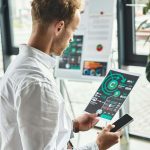Essential Guide for Homebuyers: Evaluating Flood Risk in Thames Valley Properties Before You Buy
When considering purchasing a property in the Thames Valley, one of the most critical factors to evaluate is the risk of flooding. This comprehensive guide will walk you through the steps to assess flood risk, understand the implications, and make an informed decision.
Understanding Flood Risk: Why It Matters
Flooding is a significant concern in many areas, particularly those near rivers, coastal regions, or low-lying lands. The Thames Valley, with its proximity to the River Thames, is no exception. Climate change has exacerbated the issue, leading to more frequent and severe flooding events.
A découvrir également : Can overseas investors take advantage of the UK’s property market in a post-pandemic landscape?
“Flooding has clearly become one of the biggest climate problems, with an increasing number of storms and more extreme ones fueled by climate change,” notes a report on climate issues in similar regions.
Identifying Flood Risk Areas
To determine if a property is at risk of flooding, you need to identify the flood zone it is located in. Here are the key steps:
Avez-vous vu cela : Find your perfect property with a top spanish real estate agency
Check Flood Maps
The Environment Agency provides detailed flood maps that categorize areas based on their flood risk. These maps are crucial for understanding the likelihood of flooding in a particular area.
- Flood Zone 1: Low risk of flooding (less than 1 in 1,000 annual chance)
- Flood Zone 2: Moderate risk of flooding (between 1 in 100 and 1 in 1,000 annual chance)
- Flood Zone 3: High risk of flooding (greater than 1 in 100 annual chance)
You can access these maps through the Environment Agency’s website or local authorities.
Consult Local Authorities
Local authorities, such as the council, often have detailed information on flood risk areas. They may have conducted Strategic Flood Risk Assessments, which provide a comprehensive overview of flood risks in the area.
Assessing Surface Water and Drainage Systems
Surface water flooding and the efficiency of drainage systems are critical factors to consider.
Surface Water Flooding
This type of flooding occurs when heavy rainfall overwhelms the ground and drainage systems, causing water to accumulate on the surface.
- Risk Assessment: Look for areas with poor drainage or those that have experienced surface water flooding in the past.
- Local Information: Talk to local residents or check historical flood data to understand the frequency and severity of surface water flooding.
Drainage Systems
Effective drainage systems can significantly reduce the risk of flooding.
- Sustainable Drainage Systems (SuDS): These systems are designed to manage surface water runoff in a sustainable way. Look for properties with SuDS in place.
- Maintenance: Ensure that the drainage systems are well-maintained. Poorly maintained systems can increase the risk of flooding.
Evaluating Property-Specific Risks
Each property has its unique set of risks and mitigating factors.
Property Elevation
Properties located on higher ground are generally less prone to flooding.
- Elevation Maps: Use topographic maps to determine the elevation of the property relative to the surrounding area.
- Local Topography: Understand the local topography and how it might affect water flow during heavy rainfall.
Building Design and Construction
The design and construction of the property can also impact its flood risk.
- Flood-Resistant Materials: Look for properties built with flood-resistant materials and designed with flood mitigation in mind.
- Elevated Foundations: Properties with elevated foundations or flood-proofed basements are better protected against flooding.
Insurance and Financial Implications
Flood risk can significantly impact insurance premiums and property values.
Flood Insurance
Properties in high-risk flood zones often require specialized flood insurance, which can be costly.
- Premiums: Understand the insurance premiums associated with the property and how they might change over time.
- Discounts: Some communities, like Newport, have achieved high ratings in the Community Rating System (CRS) which can result in discounts on flood insurance premiums.
Government Funding and Support
Local and national governments often provide funding and support for flood risk management.
Flood Defense Schemes
Government-funded flood defense schemes can significantly reduce the risk of flooding in certain areas.
- Local Initiatives: Check if there are any local flood defense initiatives or plans to improve drainage systems.
- Funding: Understand if there is any government funding available for flood mitigation measures.
Practical Advice for Homebuyers
Here are some practical steps you can take to evaluate and mitigate flood risk when buying a property:
Conduct a Risk Assessment
- Hire a Professional: Consider hiring a surveyor or engineer to conduct a detailed risk assessment.
- Historical Data: Review historical flood data for the area.
- Local Insights: Talk to local residents and authorities to gain insights into the area’s flood history.
Inspect the Property
- Look for Signs of Flooding: Check for signs of past flooding such as water marks, mold, or structural damage.
- Drainage Systems: Inspect the property’s drainage systems to ensure they are functioning properly.
Consider Mitigation Measures
- Flood-Proofing: Consider investing in flood-proofing measures such as installing flood gates or using flood-resistant materials.
- Regular Maintenance: Ensure that the property’s drainage systems are regularly maintained.
Detailed Checklist for Evaluating Flood Risk
Here is a detailed checklist to help you evaluate the flood risk of a property:
- Check Flood Maps:
- Identify the flood zone the property is located in.
- Understand the annual chance of flooding.
- Consult Local Authorities:
- Review Strategic Flood Risk Assessments.
- Ask about local flood defense initiatives.
- Assess Surface Water Flooding:
- Look for areas with poor drainage.
- Check historical data for surface water flooding.
- Evaluate Drainage Systems:
- Check if sustainable drainage systems are in place.
- Ensure regular maintenance of drainage systems.
- Property-Specific Risks:
- Check the property’s elevation relative to the surrounding area.
- Evaluate the building design and construction for flood resilience.
- Insurance and Financial Implications:
- Understand insurance premiums and potential discounts.
- Consider the impact on property values.
- Government Funding and Support:
- Check for government-funded flood defense schemes.
- Understand available funding for flood mitigation measures.
Example: Newport’s Approach to Flood Risk Management
Newport, Rhode Island, serves as a good example of effective flood risk management. The city has achieved a Class 7 designation in the Community Rating System (CRS) by FEMA, which provides homeowners with a 15% discount on their flood insurance premiums. This is a result of the city’s proactive measures in flood risk management, including the adoption of FEMA FIRM maps and the implementation of sustainable flood mitigation strategies.
Evaluating flood risk is a crucial step in the homebuying process, especially in areas like the Thames Valley. By understanding flood zones, assessing surface water and drainage systems, evaluating property-specific risks, and considering insurance and financial implications, you can make a well-informed decision. Remember to use practical tools like flood maps, consult local authorities, and consider mitigation measures to protect your investment.
In the words of a local resident, “Understanding the flood risk of a property is not just about avoiding potential disasters; it’s about ensuring the long-term sustainability and value of your home.” By following this guide, you can navigate the complexities of flood risk evaluation and find a property that is both safe and valuable.











